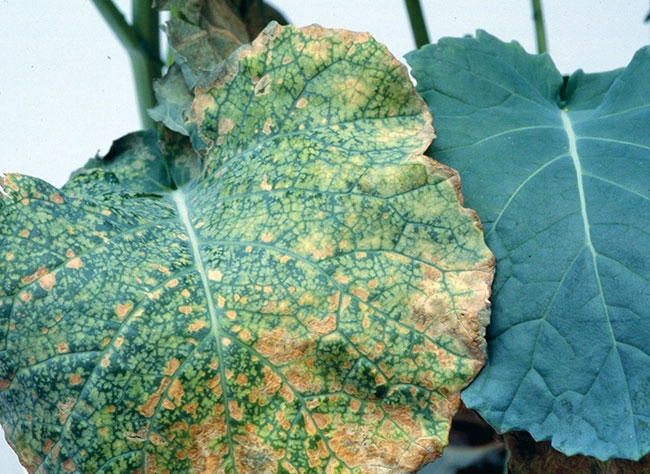
Features
Micronutrients
Seed & Chemical
Assessing micronutrient deficiencies
When we think of applying fertilizer, the nutrients that come to mind initially are the major nutrients nitrogen (N), phosphorus (P), potassium (K) and sulphur (S). However, there are 10 other mineral elements or nutrients needed by plants – most are micronutrients. In most agricultural soils, widespread shortages of micronutrients are uncommon, but when one or two of them are in short supply, crop growth can be severely restricted and crop yields depressed.
In the Northern Great Plains (NGP), it was only a couple of decades ago that micronutrient deficiency began to be considered a significant occurrence. Now, most areas readily accept that micronutrient deficiencies can occur. There are a number of reasons why this has happened. First, farm soils have been cropped longer, with most fields having a crop production history of over 100 years. Secondly, as higher yielding varieties and hybrids have been developed, crop yields and nutrient removal through harvest have continued to increase. Third, agronomic science has continued to improve soil and plant analysis techniques to better detect low availability of micronutrients. Lastly, education of field agronomists and crop advisers has increased the awareness and ability to look for, and diagnose, possible micronutrient deficiencies.
A micronutrient deficiency will not occur over a whole field, but will be present in irregularly shaped areas within a field. Patches are often severely affected, and these graduate into moderately affected areas, and finally transition into areas that do not exhibit or have any micronutrient deficiency. This is the result of natural spatial variability in soil characteristics that affect micronutrient availability. These characteristics include soil pH, texture, organic matter, cation exchange capacity, electrical conductivity and soil drainage.
Just because there are some areas of micronutrient deficiency doesn’t necessarily mean a whole field should receive a micronutrient application. For example, while field scouting with a farmer for the presence and severity of an insect pest so he could make a decision whether to apply an insecticide or not, he asked me to look at an area of canola that had poor growth. I was able to recognize boron (B) deficiency symptoms and took both soil and plant samples from the poor growth area, as well as from an adjacent area with better crop growth. The analyses confirmed my visual diagnosis of B deficiency, but I’ll admit his response at first was a bit disappointing. He said “I realize you did a great job, but it’s only five acres and there is no sense getting too excited for such a small portion of the field.” His response made sense after some thought, as the benefit of correcting the deficiency on such a small area didn’t justify the time and cost.
The patchiness of micronutrient deficient areas in a field and the difficulty of assessing the true extent of a micronutrient deficiency are challenging. I suggest we approach the challenge in much the same way crop advisers approach pest infestation assessments. First, confirm the suspected problem and assess the extent of the field that is affected. Next, make an estimate of what the economic cost will be if nothing is done to correct the problem. Lastly, compare the cost of treating the problem with the value of the expected yield increase if treated with an in-crop foliar micronutrient. If there is sufficient net return from applying a micronutrient to the crop, go ahead with the application.
One last word of advice: even if an in-crop micronutrient application isn’t justified using this assessment procedure, it is useful to conduct further soil sampling on the field after harvest to more accurately assess the extent of a micronutrient deficiency. Further investigation may show more of the field may be moderately deficient, and a blanket application of a soil-applied micronutrient containing fertilizer may be a useful decision for longer-term crop production on the field.
Dr. Thomas L. Jensen is Director, Northern Great Plains International Plant Nutrition Institute (IPNI). Reprinted with permission from IPNI Plant Nutrition Today, Fall 2014, No. 2.
February 18, 2015 By Dr. Thomas L. Jensen
 Boron deficient canola leaf versus healthy leaf (right). When we think of applying fertilizer
Boron deficient canola leaf versus healthy leaf (right). When we think of applying fertilizer